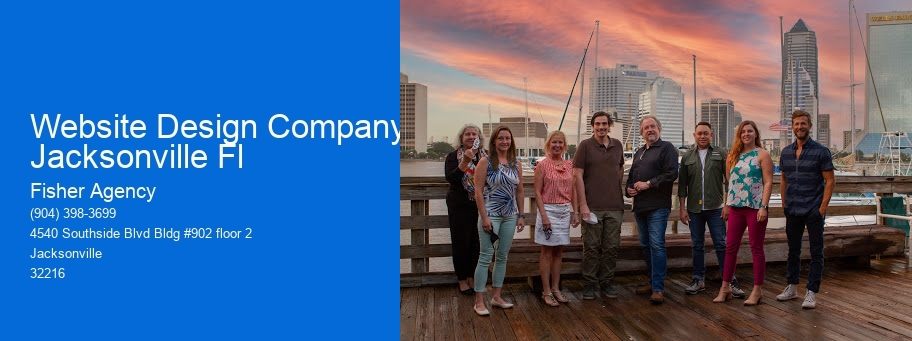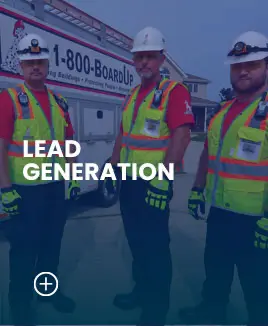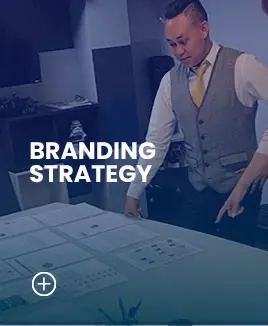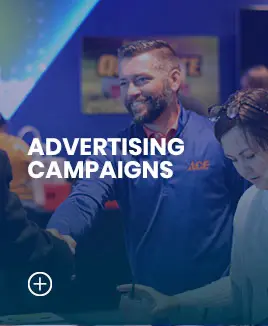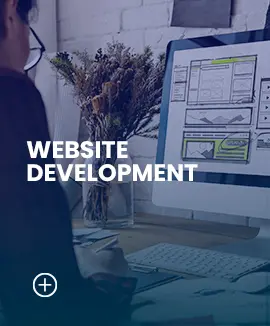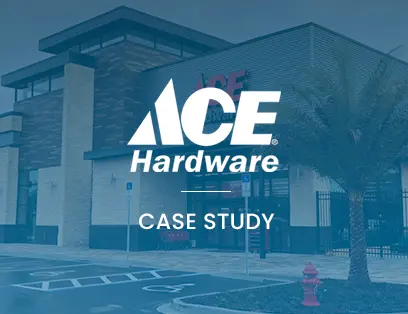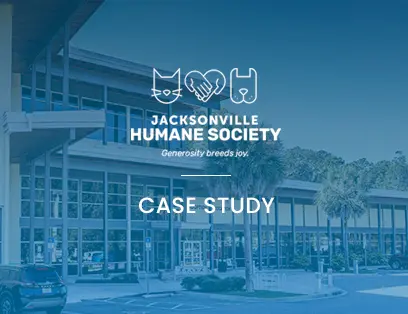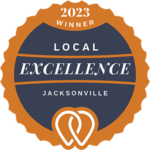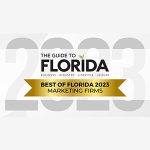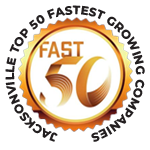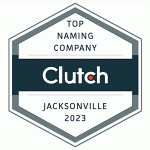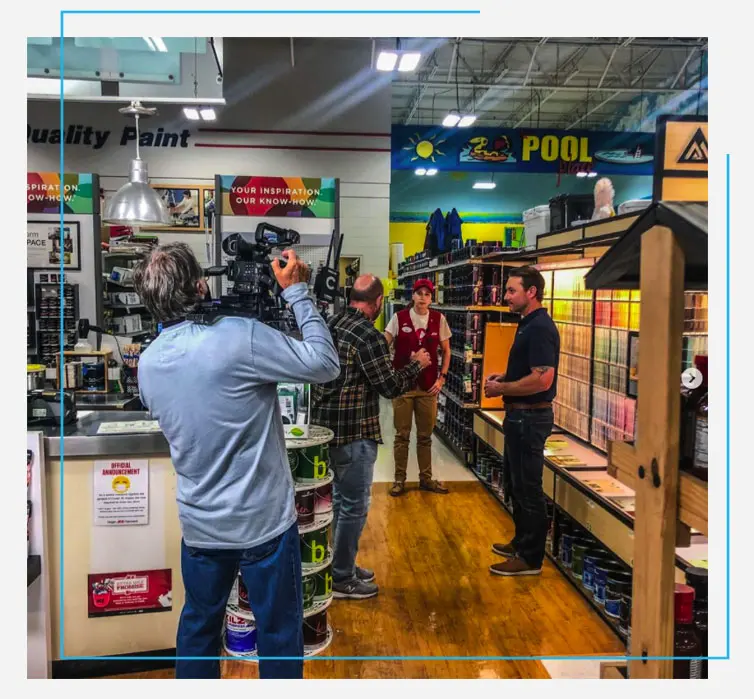Are you looking to grow your business through lead generation? Maybe you need a fresh new brand to increase leads. At Fisher Agency, a top marketing and design agency based in Jacksonville, FL, we have some of the best marketing strategies that will help you hook new clients. It doesn’t matter if you’re a Fortune 500 company or a small business; we can find the marketing angle that works best for you. If you are looking for web design, we do that. If you are looking for branding and logo design, we do that. And, if you are looking for digital marketing, we do that, too. In fact, we can put together a comprehensive marketing plan to determine the most cost-effective advertising strategies for you.
Website Design Company Jacksonville Fl: Crafting Digital Experiences That Are Visually Appealing And User-Friendly Is Vital For Online Success
User User Interface (UI) and User Experience (UX): The Heart of Website Design
Ever arrived on a website and immediately felt ... lost? Baffled? Perhaps even a little disappointed? That anxious feeling frequently comes from a detach between the user interface (UI) and the user experience (UX) It's when the website looks pretty but is a headache to browse, or vice versa. This disconnect leads to high bounce rates, low engagement, and missed chances. Are you unwittingly pushing potential customers away?
The UI/UX Tightrope Stroll
Consider UI as the face of your site-- the buttons, the layout, the visual aspects. UX, on the other hand, is the feeling a user gets when interacting with those elements. It has to do with how user-friendly, effective, and pleasurable the experience is. When these two aren't in sync, it's like attempting to dance with two left feet. You may have an aesthetically sensational site, however if users can't find what they need or the process is clunky, they'll leave. On the other hand, a highly functional website that appears like it was created in the 90s will not inspire confidence or engagement.
How Fisher Agency Harmonizes UI/UX
At Fisher Agency, we comprehend that extraordinary user experience is not just a nice-to-have; it's the bedrock of effective website design. We dive deep into comprehending your target market, their requirements, and their behaviors. This permits us to craft user interfaces that are not just aesthetically attractive but likewise extremely instinctive and easy to use. We diligently develop every aspect, from navigation menus to call-to-action buttons, to ensure a seamless and satisfying journey for your visitors.
- User-Centric Method: We put your users at the heart of every design decision.
- User-friendly Navigation: We develop clear and easy-to-navigate sites.
- Visually Appealing Styles: We blend aesthetic appeals with performance to create interesting experiences.
- Mobile Optimization: We guarantee your website looks and functions perfectly on all gadgets.
We don't simply develop websites; we craft digital experiences that resonate with your audience and drive outcomes. Envision a website where visitors easily find what they're trying to find, where the style boosts the content, and where every interaction leaves them feeling pleased and amazed. That's the power of a well-executed UI/UX technique, and that's what we provide at Fisher Agency. We approach site style with the end-user in mind and tailor our method to each task based on business's target market.
Website Design Concepts and Components
Ever feel like you're shouting into the void with your website? You have actually put your heart and soul into your content, however it's simply not resonating. It's a common snag: crafting a website that not just looks excellent however also speaks directly to your audience. This is where comprehending the core principles and elements of website design becomes important. Are you focusing on visual appeal over usability, or vice versa? Striking the best balance is the secret.
The Structure Obstructs
- Color Theory: More than simply aesthetic appeal, color evokes feeling and guides the eye. Consider your brand name's personality-- does it shriek bold and energetic, or calm and sophisticated?
- Typography: Legibility is king! Pick fonts that are simple to check out throughout gadgets and that enhance your total design. A trendy font is useless if no one can decipher it.
- Imagery: Top quality photos and graphics can raise your website. However beware of stock images that feel generic. Authenticity matters!
- Design: An efficient design guarantees a smooth user experience. Focus on essential info and guide visitors through your content with clear visual hints.
Principles in Action
Consider the principle of "hierarchy." Are you directing your users' eyes to the most essential elements? Or is whatever completing for attention, leading to a confusing mess? Good hierarchy uses size, color, and placement to create a clear course for the user.
Another vital principle is "balance." A balanced style feels steady and harmonious - Fisher Agency. This doesn't necessarily indicate ideal balance, however rather a circulation of visual weight that creates a sense of balance. Envision a seesaw-- you desire both sides to feel grounded
Common Problems and Solutions
One regular bad move is ignoring mobile responsiveness. In today's mobile-first world, a site that does not adapt to different screen sizes is almost useless. Users will merely bounce if they need to pinch and zoom to navigate your website (Fisher Agency). The search engines punish websites that are not mobile friendly.
This is where the Fisher Agency truly shines. They understand the importance of a seamless user experience throughout all gadgets. They craft sites that are not just visually sensational however likewise incredibly intuitive and easy to use. They thoroughly think about the mobile experience, guaranteeing that your site looks and functions perfectly on any gadget. They work to develop a site that looks excellent however likewise acts as a high carrying out lead generation tool.
A sluggish packing speed is a death sentence for any website. Users are impatient, and they won't linger for your website to load. Optimize your images, lessen your code, and utilize internet browser caching to improve your site's efficiency. A faster site not only enhances user experience but also increases your online search engine rankings.
The Fisher Agency focuses on speed and efficiency, ensuring that your site loads rapidly and efficiently. They use advanced web design strategies and technologies to optimize your website for optimal speed and performance. They likewise know the significance of keeping the technical financial obligation low, so you don't end up with a poorly coded website that is difficult to update in the future.
Website Design Software and Technologies
Ever felt like you're battling a digital octopus when attempting to produce a website? You're juggling design concepts, user experience (UX), and the ever-evolving landscape of web technologies. It's not simply about making a site appearance pretty; it has to do with crafting an experience that guides visitors, converts leads, and leaves a long lasting impression. How do you even start to navigate this complex world?
Let's speak about the elephant in the room: that sinking feeling when you understand your style isn't responsive. It looks wonderful on your desktop, but diminishes into an unreadable mess on a smartphone. Or worse, the mobile navigation is entirely broken. What excellent is a lovely site if no one can really utilize it on their phones? You are losing out on a substantial audience. Did you know that mobile represent approximately half of all web traffic worldwide?
The Fisher Agency's Technique
The Fisher Agency understands this frustration thoroughly. They have a core viewpoint that prioritizes mobile-first website design. They build with the smallest screens in mind, making sure a seamless experience for mobile users. This isn't simply an afterthought; it's baked into their whole design process. They utilize cutting-edge strategies like progressive improvement, which suggests the core functionality of the website deals with older internet browsers and gadgets, while newer technologies add extra style and functions for those with modern-day setups.
They are likewise proficient at making sure the site fulfills the most recent ease of access standards, making it simpler for individuals with disabilities to use. This not just broadens your audience but also improves the overall user experience for everyone. A website that's easy to navigate and comprehend is a website that converts.
Secret Factors to consider
Choosing the right tools and technologies is vital. Here are a couple of things to remember:
- Content Management System (CMS): Select a CMS that's easy to use and permits simple content updates. WordPress stays a popular option, but explore choices like Drupal or Website design for particular requirements.
- Front-End Frameworks: Structures like React, Angular, or Vue.js can simplify advancement and produce vibrant interface. Weigh the complexity versus your task's requirements.
- Responsive Design Frameworks: Bootstrap and Foundation provide pre-built elements and grids for producing responsive designs quickly.
Here's a pro suggestion: do not get captured up in the hype of the cutting edge. Focus on choosing tools that fix your specific problems and fit your team's ability. A well-executed site using older innovations will constantly exceed an inadequately implemented site utilizing the current and biggest.
The Fisher Agency utilizes a carefully curated stack of innovations that are customized to each customer's requirements. They prioritize maintainability and scalability, guaranteeing that your website can grow and adapt as your service develops.
Mobile-First and Responsive Website Design: A New Period
Remember dial-up? Those days are long gone, and so need to be websites created solely for desktop screens. Now, your site's first impression is frequently on a smartphone. A clunky, desktop-centric design on a mobile phone? That's a missed out on chance. The user will go elsewhere.
That's where mobile-first and responsive design come in. It's not simply about shrinking aspects; it has to do with prioritizing the user experience on smaller sized screens and then scaling up for larger ones. Believe of it as building a house from the within out, ensuring the structure is strong before including the bells and whistles.
Why Mobile-First Matters
- Improved User Experience: A streamlined mobile experience leads to better visitors.
- SEO Boost: Google favors mobile-friendly websites in its search rankings.
- Increased Engagement: A responsive style encourages users to explore your site on any device.
What if your style is already live? Implementing responsive style can look like trying to retrofit a rocket mid-flight. Revamping a website from scratch can be a complicated job. Hours of design work, prospective downtime, and the danger of breaking existing functionality.
The Fisher Agency comprehends this reality. They do not simply construct sites; they craft digital experiences. They prioritize a mobile-first approach, ensuring that your website looks wonderful and operates flawlessly on any gadget.
They are professionals at taking sites that are not mobile friendly and turning them into a responsive masterpiece.
Tips for a Smooth Transition
- Start with a Material Inventory: What content is necessary for mobile users?
- Prioritize Secret Actions: Make it simple for users to finish essential tasks on their phones.
- Optimize Images: Minimize image sizes to enhance loading times on mobile gadgets.
Consider this: a site that loads in 3 seconds has a bounce rate 32% lower than one that takes 6 seconds. Speed matters.
One crucial design element in responsive web design is using breakpoints. Breakpoints specify screen widths at which your site's layout changes to best fit the device being utilized. Choosing the ideal breakpoints is vital for a smooth user experience across various devices.
The Fisher Agency can help you choose the appropriate breakpoints, optimize images and more!
So, is your site all set for the mobile transformation? Welcoming mobile-first and responsive style isn't simply a pattern; it's a need for prospering in today's digital landscape.
Jacksonville, FL: Premier Web Design Solutions
Jacksonville, Florida, a dynamic city on the First Coast, boasts a population surpassing 900,000, making it the most populous city in the state. Known for its gorgeous beaches, substantial park system, and growing company environment, Jacksonville uses a special mix of urban features and natural beauty. The city's varied economy spans markets from finance and healthcare to logistics and advanced production, cultivating a vibrant and innovative environment.
If you're looking to raise your online presence, Fisher Agency can assist. Contact them today for a complimentary consultation and professional suggestions on Website design to enhance your digital method.
- Website Design: Designing a site's look and feel and UX is key to drawing in and keeping visitors. Good Website Design elevates a brand and guides users seamlessly through the online space.
- User Interface Design: User Interface Design emphasizes the visual aspects and interactivity of a digital product. A skillfully made UI is vital for developing engaging and easy-to-use digital experiences.
- User Experience: User Experience focuses on how people feel when engaging with a digital product. It has a vital role in developing engaging and productive online presences.
- Responsive Web Design: Responsive web design assures optimal viewing results across different devices. It's vital for making flexible digital user interfaces.
- Html: HTML provides the structure and material for webpages. It is essential for creating the visual design and interactive features of online existence.
- Css: CSS dictates the visual appearance of online content, controlling elements like layout, colours, and fonts. This styling language is essential for developing engaging and user-friendly digital experiences.
- Javascript: Javascript enlivens web pages, making them interactive and dynamic. It's vital for developing immersive user interactions in online environments.
- Web Accessibility: Web Accessibility makes certain digital content is usable by all, comprising people with disabilities. Integrating accessibility from the start of development creates more all-encompassing and user-friendly online experiences.
- Web Development: Web Development is the creation and maintenance of sites on the internet, ensuring functionality and user experience. It is essential for setting up an online presence and crafting interesting digital platforms.
- Content Management System: A Content Management System (CMS) aids in developing, administering, and modifying digital content. It lets users to construct and keep an online presence without needing to code.
- Search Engine Optimization: Search Engine Optimization enhances online visibility through strategic content and technical modifications. This process is essential to boost a site's ranking and draw in more organic traffic, resulting in bigger success for any online business.
- Wireframe: Wireframes are skeletal blueprints that define a digital product's layout and features. They are essential for planning user journeys and content hierarchy before visual design starts for online platforms.
- Prototype: A Prototype is a preliminary version of a system, used to test and improve its functionality and user experience. In interactive application development, prototypes allow designers to visualize the layout and flow of content before final development.
- Bootstrap Framework: Bootstrap is a popular opensource system for developing responsive, mobile-first web applications. It provides pre-built components and tools that simplify the procedure of creating consistent and visually appealing online presences.
- Front End Development: Front End Development centers on constructing the UI and engaging components of a website. It molds the appearance and UX of web applications.
- Back End Development: Back End Development is the engine that drives the functionality and data administration of web applications. It guarantees smooth user interactions by managing server-side logic, databases, and APIs.
- Hypertext Transfer Protocol: Hypertext Transfer Protocol is the basis for data communications on the web, enabling browsers to request and get resources from servers. It dictates how content is provided, affecting the framework and presentation of online creations.
- Domain Name System: The Domain Name System converts human-friendly names into IP addresses, guiding users toward the right server. This is key for building, ensuring people can effortlessly find and get to content.
- Web Hosting: Website Hosting provides the required server storage and framework for your site to be accessible online. This is a basic component that allows the design to reach its intended audience.
- Cross Browser Compatibility: Cross Browser Compatibility ensures a consistent user experience across different web browsers. It's essential for attracting a larger audience and maintaining the planned appearance and function of web creations.
- Mobile First Design: Mobile First Design prioritizes creating designs and features for more compact screens first. This approach guarantees optimal user experiences on all devices while building online platforms.
- Conversion Rate Optimization: Conversion Rate Optimization (CRO) enhances the user experience to direct more visitors toward desired actions. Implementing CRO strategies is vital for boosting the performance of an online presence and increasing its potential.
- Typography: The art of Typography significantly impacts user experience by making content readable and engaging on digital interfaces. It creates visual hierarchy and brand identity, affecting how visitors view and interact with the platform.
- Color Theory: Color Theory directs artistic choices, affecting user understanding and engagement. Strategic application of color principles enhances visual attractiveness and user experience for digital interfaces.
- Information Architecture: Information Architecture arranges and structures content to guarantee ease of use and findability. It's essential for developing efficient digital experiences.
- User Centered Design: User Centered Design prioritizes the intended audience's needs and preferences during the creation process. This method guarantees digital platforms are intuitive, easy to use, and effective for their target users.
- Human Computer Interaction: Human-Computer Interaction principles direct the development of easy-to-use digital interfaces. Taking into account these principles results in more understandable and efficient online experiences.
- Usability: Usability ensures a site is simple to use and understand. It's vital for developing compelling online interactions that satisfy user needs well.
- Prototyping: Prototyping is crucial for visualizing and evaluating interactive layouts before full development. It helps enhancing user experience and pinpoint possible issues early in the digital interface creation process.
- Interaction Design: Interaction design determines how users engage with digital interfaces. It's crucial for crafting intuitive and satisfying online experiences.
- Visual Design: Visual design focuses on the artistic charm and usability of digital interfaces. It molds the way users interact, leading users through content with well-made layouts and engaging visuals for optimal interaction.
- Accessibility: Accessibility ensures digital content is usable by everyone, regardless of ability. Focusing on it in development creates inclusive online experiences for all users.
- User Research: User Research informs the procedure of creating effective online sites by understanding user needs and actions. This comprehension ensures that the digital product satisfies user hopes and achieves its intended purpose.
- User Testing: User feedback reveals how actual people use a digital product, finding usability problems and guiding improvements. This feedback is essential for developing effective and user-centered online interactions.
- Navigation Design: Navigation Design leads users through digital interfaces, guaranteeing effortless access to needed content. It's crucial for good user experiences and effective digital property utilization.
- Call To Action: An Call To Action inspires users to take a specific action. It's crucial for guiding visitors and achieving goals on a digital platform.
- Layout Design: Layout Design organizes items well and attractively. It's essential for creating captivating and easy-to-use online presentations.
- Content Strategy: Content Strategy guides the plan, making, delivery, and management of helpful and usable content. It makes sure that content is in line with user needs and business objectives, forming the total digital existence.
- Design Patterns: Design Patterns are easily usable answers to frequent software development problems. They streamline the creation of web applications by providing tested models.
- Heuristic Evaluation: Heuristic Evaluation assesses a user interface usability based on well-known guidelines. It aids detect and correct design flaws in engaging systems, improving the general user experience and satisfaction.
- Cognitive Load: Cognitive Load refers to the intellectual effort needed to handle information. Lowering needless Cognitive Load is crucial for creating user-friendly digital interfaces.
- User Persona: User profiles are fictional, representative users that assist with decisions about site development. They guarantee the final product satisfies intended user needs and goals, resulting in a more successful and user-centered digital experience.
- User Interface: User Interface is the point of interaction between a user and a digital product. It has a vital role in how visitors perceive and utilize online platforms.
- Persona: Personas are fictional portrayals of ideal users, guiding content and layout choices. They help customize digital experiences to fulfill audience needs and boost engagement.
- A/B Testing: A/B Testing contrasts two editions of a webpage to identify which performs superior with individuals. This data-oriented approach assists optimize digital interactions for transactions and interaction.
- User Journey: User Journey maps illustrate how users interact with a product or service, outlining their experiences and pain points. Grasping these journeys is key for developing intuitive and effective online platforms.
- Task Analysis: Task Analysis identifies user goals and divides them into tinier steps. This informs the creation of efficient and easy-to-use online platforms.
- Click Through Rate: CTR assesses how frequently users click on a particular link relative to how many times they view it. A strong CTR suggests efficient digital layout and content, causing greater user engagement.
- Customer Experience: Customer Experience shapes how users perceive a brand and its offerings. Positive digital interactions are crucial for engagement and conversions on online platforms.
- Media Query: Media Queries allow information adjustment for various display dimensions and device capabilities. This ensures the best user experience across different platforms when viewing content online.
- Viewport: The Viewport dictates how content is scaled on different screens. Setting it properly assures the best viewing experience across different devices when creating for the internet.
- Flexible Grid Layout: Flexible Grids offer a flexible structure for arranging content. They guarantee best user experience across various devices and screen sizes, enhancing online presence.
- Flexible Images: Responsive images conform to different screen dimensions, maintaining visual appeal and stopping layout breakage. They are essential for making sure a positive user experience on different devices when online platform creation. Flexible Images
- Fluid Layout: Fluid Layouts adjust to various screen sizes, offering an ideal viewing experience across devices. This adaptability is essential for modern digital interfaces.
- Progressive Enhancement: Progressive Enhancement is a plan for building applications that focuses on essential functionality initially, then including enhancements for users with more modern browsers and internet connections. This approach guarantees basic content and features are available to everyone, while providing an enriched experience for those with newer technology.
- Bootstrap: Bootstrap is a popular open-source system for developing adaptable, mobile-oriented web experiences. It provides pre-built components and tools that simplify the process of creating interfaces for the internet.
- Foundation Framework: Foundation Framework is a responsive front-end framework that provides a grid structure, ready-made components, and templates. It simplifies the process of creating user interfaces for online platforms.
- Web Standards: Web Standards guarantee interoperability and reachability across different web browsers and devices. They offer a consistent foundation for developing online content, promoting a better user experience.
- Screen Resolution: Screen Resolution impacts how content is displayed, influencing visuals and user experience. Adjusting to different screen sizes is important for the best digital presentation.
- Adaptive Web Design: Adaptive Web Design creates encounters that adapt to different display sizes and devices. This approach ensures online content remains reachable and user-friendly on various platforms.
- Touchscreen: Touchscreens has revolutionized how users interact with online content. Its responsiveness and instinctive gestures shape digital experiences for seeing on any type of screen.
- Breakpoints: Breakpoints are key in responsive layouts, allowing content to adjust smoothly to diverse screen sizes. They ensure optimal viewing experiences across different devices while building digital interfaces.
- Progressive Web App: Progressive Web Apps boost user experience by providing app-like features directly through web browsers. They increase user interaction and reachability for online presences.
- Hypertext Markup Language: HTML arranges and shows content on the web. It is the foundation for making online displays and interactive experiences.
- Dom: The Document Object Model represents a page's structure, allowing dynamic content modification with code. It's vital for interactive user experiences and modifying elements of a webpage.
- Web Browser: Web browsers remain vital for viewing and interacting with web based content, demonstrating how users will experience online interfaces. Therefore, developers must consider browser compatibility to guarantee their web creations are available and work correctly across different platforms.
- Html5: Html5 is the base for structuring and presenting content on the internet. It empowers developers to create interesting and dynamic online experiences.
- W3C: The develops standards for the World Wide Web, guaranteeing compatibility and accessibility on different platforms. These standards significantly affect how online content is created and presented.
- Markup Language: Markup Languages provide the framework and content for digital interfaces. They are critical for organizing information and defining how it's displayed on the internet.
- Semantic Html: Semantic Html uses semantic tags to structure content, improving reachability and SEO. This structured method enhances the user experience and entire site creation.
- Web Page: A Web Page is a key building block for online presence, offering content and functionality to users. Its careful layout and styling form the complete user experience of the digital platform.
- Hyperlink: Links join different pages, allowing users to navigate content effortlessly. They are essential for creating site structure and easy-to-use interfaces.
- Client Server Model: This Client Server Model allows users to ask for resources from a main server, allowing interactive and dynamic online experiences. This architecture is essential for building and providing modern online applications.
- Web Server: A Web Server supplies content and functionality to users through the internet. It is a vital component in organizing online presence and digital interfaces.
- Frontend Development: Frontend Development crafts the user UI and UX of web apps. It connects the gap between backend features and user engagement, shaping how individuals see and interact with online platforms.
- Web Typography: Web Typography is vital for making visually appealing and easy-to-read web content. Good use of fonts and layout enhances user experience and reinforces a site's general aesthetic.
- Media Queries: Media queries enable content adjustment depending on device characteristics. This allows for responsive layouts that offer the best viewing results on different screens.
- Web Forms: Web Forms are critical for user interaction, allowing visitors to submit information and engage with a site. Their efficient implementation significantly adds to a positive user experience and general site presentation.
- Cascading Style Sheets: Cascading Style Sheets dictates the visual appearance of content organized with HTML. It handles aspects such as design, colours, and fonts, guaranteeing a consistent and appealing user interface for online platforms.
- Web Design: Web Design focuses on the look and usability of internet sites. It influences the user experience and general appeal of digital presences.
- Box Model: The Box Model is a basic idea that defines how elements are organized on a webpage. It dictates the information, padding, border, and margin of elements, influencing layout and spacing.
- Flexbox: Flexbox is a CSS layout model that offers an effective way to arrange, position, and distribute space among items in a box, even when their dimensions is unknown or changing. It's especially useful for developing adaptive user UIs across different screen sizes and device types.
- Grid Layout: Grid Layout is a potent CSS utility for designing complicated and adaptive page layouts. It allows developers to exactly manage the placement and dimensions of elements, leading to attractive and user-friendly online interactions.
- Selectors: Selectors aim at specific HTML elements for styling. They are crucial for managing the appearance of online interfaces.
- Properties: Characteristics define the look and conduct of elements, affecting layout, colors, and responsiveness. They are crucial for crafting visually appealing and functional online experiences.
- Pseudo Classes: Pseudo Classes enhance styling by targeting elements based on their condition or position, not just HTML structure. This dynamic control improves user interface and interaction in digital development.
- Css Variables: Css Variables streamline style, enabling efficient theming administration and consistent aesthetics across digital UIs. They provide centralized oversight and simple changes of design elements.
- Specificity: Specificity in styling defines which CSS rules apply, making sure elements render as intended. It's crucial for handling conflicts and creating a reliable, sustainable user interface in digital platforms.
- Inheritance: Inheritance fosters code reusability and uniformity by allowing design components to inherit properties from parent components. This guarantees a simplified and effective approach to interface creation.
- Css Frameworks: Css Frameworks make easier styling and layout, providing pre-built parts for crafting user UIs. They accelerate the process and assure uniformity across digital interactions.
- Sass: Sass is a CSS preprocessor that boosts styling with features like variables and nesting. It eases the creation of complex and maintainable layouts for digital platforms.
- Less: It is a CSS preprocessor that extends the functionality of CSS, allowing developers to write more structured, easily maintained, and adaptive stylesheets. It streamlines the procedure of designing digital interfaces and online sites by introducing features such as variables, mixins, and functions.
- Css Animations: Css Animations bring life to UIs, improving user UX through engaging visual feedback. They play a vital role in making dynamic and interactive digital experiences.
- Transitions: Transitions enhance user experience by in a visual manner linking different states or sections. Thoughtful implementation leads users through interactive interfaces, boosting engagement and navigation.
- Document Object Model: Document Object Model (DOM) serves as a programming API for HTML and XML documents. It shows the structure of a page, letting scripts to in real-time access and update content, structure, and styles, ultimately impacting building online experiences.
| 32206 | 32206 is a zip code covering a diverse region of Jacksonville FL. It includes Arlington, recognized for its mid-century architecture and convenient access to downtown. | https://en.wikipedia.org/wiki/Jacksonville,_Florida |
| 32207 | The 32207 zip code is a zip code encompassing sections of Jacksonville's Southside, recognized for its blend of residential areas and commercial developments. It includes diverse neighborhoods and easy access to major roadways. Jacksonville FL | https://en.wikipedia.org/wiki/Jacksonville,_Florida |
| 32208 | 32208 is a postal code encompassing parts of Jacksonville FL's South Side, known for its blend of housing areas and business hubs. It includes popular spots like the Avenues Mall and nearby business parks. | https://en.wikipedia.org/wiki/Jacksonville,_Florida |
| 32209 | 32209 is a zip code including parts of Arlington, a big and varied residential area in Jacksonville FL. It provides a combination of accommodation choices, parks, and convenient access to downtown. | https://en.wikipedia.org/wiki/Jacksonville,_Florida |
| 32210 | 32210 is a lively neighborhood in Jacksonville FL, famous for its blend of housing areas and commercial enterprises. It provides a useful location with easy access to highways and nearby conveniences. | https://en.wikipedia.org/wiki/Jacksonville,_Florida |
| 32211 | 32211 is a zip code primarily covering the Arlington district of Jacksonville FL. It's a vast residential area with a blend of housing choices, retail businesses, and parks. | https://en.wikipedia.org/wiki/Jacksonville,_Florida |
| 32099 | 32099 encompasses Ponte Vedra Beach, a coastal community known for its high-end homes and golf courses. It provides gorgeous beaches and a laid-back, resort-like atmosphere. | https://en.wikipedia.org/wiki/List_of_Jacksonville_neighborhoods |
| 32201 | 32201 is a city center Jacksonville FL postal code including the city center. It features landmarks such as the Jacksonville Landing and historical buildings. | https://en.wikipedia.org/wiki/Jacksonville,_Florida |
| 32202 | 32202 is a lively neighborhood in Jacksonville FL, known for its historic charm and varied community. It offers a mix of homes, shops, and cultural attractions. | https://en.wikipedia.org/wiki/Jacksonville,_Florida |
| 32203 | 32203 is a zip code encompassing a large portion of Jacksonville FL's downtown area and nearby neighborhoods. It includes many historical structures, businesses, and residential areas beside the St. Johns River. | https://en.wikipedia.org/wiki/Neighborhoods_of_Jacksonville |
| 32204 | 32204 is a zip code including the neighborhood of Ortega in Jacksonville FL. It is a rich and historic area known because of its water's edge properties and oak-lined streets. | https://en.wikipedia.org/wiki/Jacksonville,_Florida |
| 32205 | 32205 is a zip code covering a large portion of Jacksonville FL's urban core, containing the historical Riverside and Avondale neighborhoods. Known for its dynamic arts scene, diverse architecture, and pedestrian-friendly streets, 32205 offers a blend of housing, business, and recreational spaces. | https://en.wikipedia.org/wiki/List_of_Jacksonville_neighborhoods |
| 32212 | 32212 is a zip code covering parts of Jacksonville FL's Southside, recognized for its blend of residential areas and commercial centers. It offers a variety of housing options, retail, and dining experiences. | https://en.wikipedia.org/wiki/Jacksonville,_Florida |
| 32214 | This ZIP code is a zip code encompassing parts of Jacksonville's Southside, recognized for its mix of residential areas and commercial developments. It offers a blend of suburban living with convenient access to shopping, dining, and major roadways. | https://en.wikipedia.org/wiki/Neighborhoods_of_Jacksonville |
| 32215 | 32215 is a zip code including several neighborhoods in Jacksonville FL's Southside region. It's recognized for a blend of housing areas, business centers, and closeness to major roads. | https://en.wikipedia.org/wiki/Jacksonville,_Florida |
| 32216 | That ZIP code is a zip code covering parts of Jacksonville's Southside, noted for its combination of residential zones and commercial developments. It provides a suburban feel with ready access to shopping, dining, and major roadways. | https://en.wikipedia.org/wiki/Jacksonville,_Florida |
| 32217 | 32217 is a zip code encompassing a big portion of Mandarin, a suburb in Jacksonville FL known for its picturesque waterfront scenes. It includes a blend of housing neighborhoods, parks, and business developments along the St. Johns River. | https://en.wikipedia.org/wiki/Jacksonville,_Florida |
| 32218 | 32218 is a zip code including parts of the Southside area in Jacksonville FL. It's a mainly residential section with a mix of apartments, condos, and single-family homes. | https://en.wikipedia.org/wiki/Southside,_Jacksonville |
| 32227 | 32227 encompasses the Jacksonville Beach area, offering a combination of housing neighborhoods and beachfront attractions. It is known for its laid-back shoreline lifestyle and popular surfing spots. Jacksonville FL | https://en.wikipedia.org/wiki/Jacksonville,_Florida |
| 32228 | 32228 is a zip code covering the Jacksonville FL region. It is recognized for its grainy shores, lively boardwalk, and oceanfront leisure pursuits. | https://en.wikipedia.org/wiki/Jacksonville,_Florida |
| 32229 | 32229 is a zip code encompassing the Arlington district of Jacksonville FL. It's a big housing and commercial district located east of the St. Johns River. | https://en.wikipedia.org/wiki/Jacksonville,_Florida |
| 32235 | 32235 is a zip code mainly covering the Arlington area of Jacksonville FL. It is a large housing area with a combination of housing options, retail, and business businesses. | https://en.wikipedia.org/wiki/Jacksonville,_Florida |
| 32236 | 32236 is a zip code covering the Oceanway and New Berlin neighborhoods in Jacksonville FL. It's a largely residential area known for its residential character and proximity to the Jax International Airport. | https://en.wikipedia.org/wiki/Jacksonville,_Florida |
| 32237 | 32237 is a zip code encompassing a portion of Jacksonville's Southside area. It is known for a blend of housing neighborhoods, commercial centers, and closeness to the University of North Florida. | https://en.wikipedia.org/wiki/Neighborhoods_of_Jacksonville |
| 32238 | 32238 is a zip code encompassing parts of Jacksonville FL's Southside, known for its blend of residential areas and business expansions. It includes well-known shopping centers, office complexes, and varied housing options. | https://en.wikipedia.org/wiki/Neighborhoods_of_Jacksonville |
| 32239 | 32239 is a zip code encompassing the Kernan area of Jacksonville FL. It's a burgeoning residential area with a mix of housing selections and handy access to facilities. | https://en.wikipedia.org/wiki/Jacksonville,_Florida |
| 32240 | 32240 is a zip code covering the Argyle Forest neighborhood in Jacksonville FL. This locale is recognized for its family-friendly atmosphere and residential development. | https://en.wikipedia.org/wiki/Jacksonville,_Florida |
| 32241 | 32241 is a Jacksonville FL zip code encompassing the Southside Estates neighborhood. It's a mainly residential area with a combination of housing options and easy access to major roadways. | https://en.wikipedia.org/wiki/Jacksonville,_Florida |
| 32244 | 32244 is a zip code encompassing the Jacksonville Beaches region. It covers Neptune Beach, Atlantic Beach, and some of Jacksonville Beach. | https://en.wikipedia.org/wiki/Jacksonville,_Florida |
| 32219 | 32219 is a zip code associated with the Mandarin area in Jacksonville FL. It's a big residential location known for its mix of established areas and more recent projects. | https://en.wikipedia.org/wiki/Jacksonville,_Florida |
| 32220 | 32220 is a zip code covering the Argyle Forest neighborhood in Jacksonville FL. It's a primarily residential area recognized for its family-friendly atmosphere and easy access to shopping and dining. | https://en.wikipedia.org/wiki/Jacksonville,_Florida |
| 32221 | 32221 is a zip code including parts of of Jacksonville FL's Southside, recognized for its mix of housing developments and commercial developments. It includes communities like Baymeadows and Deerwood, providing a variety of housing and retail choices. | https://en.wikipedia.org/wiki/Jacksonville,_Florida |
| 32222 | That zip code in Jacksonville, FL comprises the Beach Haven and South Beach sections. This area is known for its proximity to the shore and housing areas. | https://en.wikipedia.org/wiki/Neighborhoods_of_Jacksonville |
| 32223 | 32223 is a zip code surrounding the tangerine neighborhood of Jacksonville FL. It is a big residential area known for its past, parks, and proximity to the St. Johns River. | https://en.wikipedia.org/wiki/Neighborhoods_of_Jacksonville |
| 32224 | 32224 is a zip code covering Jacksonville Beach, a coastal community known for its sandy shores. Residents and tourists same enjoy riding waves, angling, and a lively promenade scene in Jacksonville FL. | https://en.wikipedia.org/wiki/Jacksonville,_Florida |
| 32225 | 32225 is a zip code covering Jacksonville FL's Southside neighborhood, known because of its combination of residential areas, commercial hubs, and closeness to the St. Johns River. It provides a mixture of outskirts living with convenient access to shopping, dining, and leisure opportunities. | https://en.wikipedia.org/wiki/Jacksonville,_Florida |
| 32226 | 32226 is a zip code encompassing the Southside area of Jacksonville FL. It's a big, varied region known for its commercial centers, housing developments, and proximity to the St. Johns River. | https://en.wikipedia.org/wiki/Jacksonville,_Florida |
| 32230 | 32230 is a zip code encompassing the Jacksonville FL neighborhoods of Arlington and Fort Caroline. This area provides a combination of housing developments, parks, and historical sites. | https://en.wikipedia.org/wiki/Jacksonville,_Florida |
| 32231 | 32231 is the zip postal code for Mandarin, a big suburban community in Jacksonville FL known because of its history and picturesque views along the St. Johns River. It provides a mix of residential areas, parks, and commercial centers. | https://en.wikipedia.org/wiki/Jacksonville,_Florida |
| 32232 | 32232 is the zip code of the Kernan area of Jacksonville FL. It's a growing suburban area recognized for its residential neighborhoods and proximity to the beach. | https://en.wikipedia.org/wiki/Neighborhoods_of_Jacksonville |
| 32234 | 32234 is the zip code of the Mandarin neighborhood in Jacksonville FL. It's a large residential area recognized for its history, parks, and proximity to the St. Johns River. | https://en.wikipedia.org/wiki/Jacksonville,_Florida |
| 32245 | 32245 is a zip code encompassing a few neighborhoods in Jacksonville FL, including the wealthy Deerwood area known for its gated neighborhoods and the large St. Johns Town Center retail and restaurant destination. Residents can appreciate a mix of upscale living, retail convenience, and closeness to major roadways. | https://en.wikipedia.org/wiki/Jacksonville,_Florida |
| 32246 | 32246 is a zip code encompassing the Hodges Boulevard area in Jacksonville FL. It's a primarily housing area with a mix of housing options and commercial developments. | https://en.wikipedia.org/wiki/Neighborhoods_of_Jacksonville |
| 32247 | 32247 is a zip code encompassing the Mandarin neighborhood in Jacksonville FL. It's a large suburban area known for its historic origins, riverfront scenery, and welcoming environment. | https://en.wikipedia.org/wiki/Neighborhoods_of_Jacksonville |
| 32250 | The 32250 is a zip code encompassing a part of Jacksonville FL's Southside, recognized for its mix of housing areas and commercial developments. It includes parts of the Baymeadows area, providing a range of accommodation choices and convenient access to stores and dining. | https://en.wikipedia.org/wiki/Neighborhoods_of_Jacksonville |
| 32254 | 32254 is a postal code encompassing parts of Jacksonville's Southside, known for its blend of housing areas and business developments. It includes the popular Deerwood Park and Tinseltown areas. | https://en.wikipedia.org/wiki/Neighborhoods_of_Jacksonville |
| 32255 | 32255 is a postal code encompassing various areas in Jacksonville FL's south side area. It features a combination of housing areas, commercial hubs, and proximity to main roadways. | https://en.wikipedia.org/wiki/Jacksonville,_Florida |
| 32256 | 32256 is a postal code encompassing parts of the South Side neighborhood in Jacksonville FL. It provides a mix of living spaces, shopping areas, and recreational opportunities. | https://en.wikipedia.org/wiki/Jacksonville,_Florida |
| 32257 | 32257 is a zip code covering the Kernan and Hodges Boulevards area of Jacksonville FL. This area is known for its housing neighborhoods, retail locations, and closeness to the University of North Florida. | https://en.wikipedia.org/wiki/Jacksonville,_Florida |
| 32258 | 32258 is a zip code encompassing parts of Jacksonville FL's Southside, known for residential sections and commercial developments. It covers communities like Baymeadows and Deerwood, offering a mix of housing options and handy access to purchasing and dining. | https://en.wikipedia.org/wiki/Jacksonville,_Florida |
| 32260 | 32260 is a zip code covering Jacksonville FL's Southside area. It includes a blend of housing, business properties, and closeness to the St. Johns River. | https://en.wikipedia.org/wiki/Jacksonville,_Florida |
| 32277 | 32277 is the zip code for Jacksonville FL, a shoreline community known for its sandy shores and vibrant boardwalk. It offers a mix of residential areas, hotels, restaurants, and recreational pursuits. | https://en.wikipedia.org/wiki/Jacksonville,_Florida |
- Downtown Jacksonville: Downtown Jacksonville is the core commercial area of Jacksonville, Florida, known for its dynamic mix of historic architecture and contemporary skyscrapers. It features cultural attractions, riverside parks, and a variety of dining and entertainment options.
- Southside: Southside is a vibrant district in Jacksonville, FL, known for its combination of residential communities, malls, and business districts. It offers a combination of city convenience and residential comfort, making it a well-liked area for families and professionals.
- Northside: Northside is a extensive district in Jacksonville, FL, known for its mixed communities and factory areas. It features a mix of residential neighborhoods, parks, and commercial zones, aiding the city's growth and development.
- Westside: Westside is a vibrant district in Jacksonville, FL, known for its multicultural community and strong cultural heritage. It features a mix of residential areas, small businesses, and parks, offering a special blend of city and suburban life.
- Arlington: Arlington is a lively district in Jacksonville, FL, known for its blend of residential areas and commercial areas. It features parks, shopping centers, and access to the St. Johns River, making it a popular area for households and outdoor enthusiasts.
- Mandarin: Mandarin remains a historic area in Jacksonville, Florida, known for its picturesque riverfront views and charming small-town atmosphere. It offers lush parks, local shops, and a vibrant cultural heritage dating back to the 19th century.
- San Marco: San Marco is a lively neighborhood in Jacksonville, FL, known for its heritage architecture and picturesque town center. It offers a mix of unique shops, restaurants, and cultural attractions, making it a popular destination for residents and visitors alike.
- Riverside: Riverside is a lively area in Jacksonville, FL, known for its heritage architecture and bustling arts scene. It offers a mix of distinctive shops, restaurants, and scenic riverfront parks, making it a well-liked destination for locals and visitors alike.
- Avondale: Avondale is a appealing neighborhood in Jacksonville, FL, known for its historic architecture and vibrant local shops. It offers a blend of residential areas, stylish restaurants, and cultural attractions along the St. Johns River.
- Ortega: Ortega is a picturesque and beautiful neighborhood in Jacksonville, FL, known for its attractive waterfront homes and tree-lined streets. It offers a pleasant blend of old Southern architecture and contemporary amenities, making it a desirable residential area.
- Murray Hill: Murray Hill is a dynamic heritage neighborhood in Jacksonville, FL, known for its quaint bungalows and unique local businesses. It offers a blend of housing comfort and a vibrant arts and dining scene, making it a well-liked destination for residents and visitors alike.
- Springfield: Springfield is a historic neighborhood in Jacksonville, FL, known for its charming early 20th-century architecture and vibrant community. It features a combination of residential homes, local businesses, and cultural attractions, making it a well-liked area for both residents and visitors.
- East Arlington: East Arlington is a lively neighborhood in Jacksonville, FL, known for its diverse community and convenient access to shopping and leisure spots. It features a blend of houses, parks, and shops, making it a attractive place to live.
- Fort Caroline: Fort Caroline is a historic district in Jacksonville, FL, known for its deep colonial history and proximity to the site of the 16th-century French fort. It includes a combination of residential areas, parks, and cultural landmarks that highlight its heritage.
- Greater Arlington: Greater Arlington in Jacksonville, FL, is a vibrant district known for its neighborhoods, retail hubs, and recreational areas. It offers a mix of suburban living with easy access to the Jacksonville downtown and waterfront locations.
- Intracoastal West: Intracoastal West is a vibrant neighborhood in Jacksonville, FL, known for its beautiful waterways and close proximity to the Intracoastal Waterway. It offers a mix of living and commercial spaces, providing a distinct combination of city convenience and natural charm.
- Jacksonville Beaches: Jacksonville Beaches remains a thriving coastal community in Jacksonville, FL, known for its lovely sandy shores and peaceful atmosphere. It provides a mix of housing areas, local businesses, and fun things to do along the Atlantic Ocean.
- Neptune Beach: Neptune Beach is a lovely beachside area located in Jacksonville FL, known for its gorgeous beaches and relaxed atmosphere. It offers a combination of living communities, local shops, and dining options, making it a favored destination for both residents and visitors.
- Atlantic Beach: Atlantic Beach is a coastal community located in Jacksonville, Florida, known for its stunning beaches and laid-back atmosphere. It offers a combination of residential areas, local shops, and outdoor recreational activities along the Atlantic Ocean.
- Jackson Beach: Jacksonville Beach is a lively seaside community in Jacksonville, FL, known for its stunning sandy shores and energetic boardwalk. It offers a mix of residential neighborhoods, local shops, restaurants, and recreational activities, making it a popular destination for both residents and visitors.
- Baldwin: Baldwin is a small locale located within Duval County, near Jacksonville FL, Florida, known for its historic charm and friendly community. It features a mix of residential areas, local businesses, and scenic parks, offering a peaceful, suburban atmosphere.
- Oceanway: Oceanway is a residential neighborhood in Jacksonville, Florida, known for its quiet atmosphere and family-friendly amenities. It features a mix of housing options, parks, and local businesses, making it a popular area for residents seeking a community-oriented environment.
- South Jacksonville: South Jacksonville is a vibrant district in Jacksonville, FL, known for its residential neighborhoods and local shops. It offers a combination of historic character and contemporary conveniences, making it a well-liked area for households and working individuals.
- Deerwood: Deerwood is a prominent neighborhood in Jacksonville, FL, known for its upscale residential communities and well-maintained green spaces. It offers a mix of elegant homes, golf courses, and close access to shopping and dining options.
- Baymeadows: Baymeadows is a vibrant district in Jacksonville, FL, known for its mix of residential neighborhoods and commercial areas. It offers a range of shopping, dining, and recreational options, making it a popular destination for locals and visitors alike.
- Bartram Park: Bartram Park is a vibrant neighborhood in Jacksonville, FL, known for its up-to-date residential communities and closeness to nature. It offers a combination of urban amenities and outdoor recreational options, making it a popular choice for families and professionals.
- Nocatee: Nocatee is a designed community located near Jacksonville, FL, known for its kid-friendly atmosphere and wide-ranging amenities. It features parks, paths, and recreational facilities, making it a favored choice for residents seeking a lively suburban lifestyle.
- Brooklyn: Brooklyn is a lively district in Jacksonville, FL, known for its classic charm and friendly community. It features a combination of houses, local businesses, and cultural landmarks that highlight the area's cultural wealth.
- LaVilla: LaVilla is a historic area in Jacksonville FL, known because of its rich heritage heritage and lively arts environment. Formerly a flourishing African American society, it played a major part in the urban music and entertainment history.
- Durkeeville: Durkeeville is a historic in Jacksonville, Florida, known for its rich African American heritage and thriving community. It features a blend of residential areas, local businesses, and cultural landmarks that reflect its long history in the city's history.
- Fairfax: Fairfax is a lively neighborhood in Jacksonville, FL, known for its historic charm and friendly community. It features a mix of houses, local businesses, and open areas, offering a inviting atmosphere for residents and guests alike.
- Lackawanna: Lackawanna is a residential neighborhood in Jacksonville, Florida, known for its peaceful streets and friendly atmosphere. It features a mix of detached houses and local businesses, contributing to its cozy vibe within the city.
- New Town: New Town is a historic neighborhood in Jacksonville, FL, recognized for its strong community spirit and vast cultural heritage. It offers a blend of residential areas, local businesses, and community organizations collaborating to revamp and improve the district.
- Panama Park: Panama Park is a living neighborhood in Jacksonville, FL, known for its peaceful streets and neighborly atmosphere. It offers simple access to local amenities and parks, making it an attractive area for families and working individuals.
- Talleyrand: Talleyrand is a historic neighborhood in Jacksonville, Florida, known for its residential charm and proximity to the St. Johns River. The area includes a mix of traditional homes and local businesses, reflecting its deep community heritage.
- Dinsmore: Dinsmore is a living neighborhood located in Jacksonville, Florida, known for its peaceful streets and community-oriented atmosphere. It features a mix of single-family homes and local amenities, offering a residential feel within the city.
- Garden City: Garden City is a vibrant neighborhood in Jacksonville, FL, known for its combination of houses and neighborhood shops. It offers a friendly community atmosphere with convenient access to city amenities.
- Grand Park: Grand Park is a dynamic neighborhood in Jacksonville, Florida, known for its historic charm and varied community. It features shaded streets, local parks, and a range of small businesses that contribute to its welcoming atmosphere.
- Highlands: Highlands is a vibrant neighborhood in Jacksonville, FL known for its pleasant residential streets and local parks. It offers a blend of historic homes and modern amenities, creating a friendly community atmosphere.
- Lake Forest: Lake Forest is a residential neighborhood located in Jacksonville, Florida, known for its quiet streets and family-oriented atmosphere. It features a mix of detached houses, parks, and local amenities, making it a appealing community for residents.
- Paxon: Paxon is a housing neighborhood located in the western part of Jacksonville, Florida, known for its varied community and affordable housing. It features a mix of single-family homes and local businesses, contributing to its friendly, suburban atmosphere.
- Ribault: Ribault is a dynamic neighborhood in Jacksonville, Florida, known for its varied community and homey feel. It features a mix of historic homes and local businesses, adding to its unique cultural identity.
- Sherwood Forest: Sherwood Forest is a living neighborhood in Jacksonville, FL, known for its tree-lined streets and kid-friendly atmosphere. It features a combination of old and modern homes, offering a tranquil suburban feel close to city amenities.
- Whitehouse: Whitehouse is a residential neighborhood located in Jacksonville, Florida, known for its calm streets and neighborly atmosphere. It features a mix of single-family homes and local amenities, making it a well-liked area for families and professionals.
- Cedar Hills: Cedar Hills is a lively neighborhood in Jacksonville, FL, known for its diverse community and easy access to local amenities. It offers a mix of residential and commercial areas, adding to its dynamic and friendly environment.
- Grove Park: Grove Park is a housing neighborhood in Jacksonville, Florida, known for its delightful historic homes and tree-filled streets. It offers a close-knit community atmosphere with convenient access to downtown services and parks.
- Holiday Hill: Holiday Hill is a housing neighborhood in Jacksonville, Florida, known for its quiet streets and tight-knit community. It offers quick access to local parks, schools, and shopping centers, making it a appealing area for families.
- Southwind Lakes: Southwind Lakes is a housing neighborhood in Jacksonville, FL known for its peaceful lakes and tidy community spaces. It offers a calm suburban atmosphere with close access to local amenities and parks.
- Secret Cove: Secret Cove is a peaceful waterfront neighborhood in Jacksonville, FL, known for its relaxing atmosphere and scenic views. It offers a combination of residential homes and natural landscapes, making it a well-liked spot for outdoor enthusiasts and families.
- Englewood: Englewood is a vibrant neighborhood in Jacksonville, FL, known for its varied community and rich cultural heritage. It offers a blend of residential areas, local businesses, and recreational spaces, making it a bustling part of the city.
- St Nicholas: St. Nicholas is a historic neighborhood in Jacksonville, Florida, known for its lovely early 20th-century architecture and lively community atmosphere. It offers a variety of residential homes, local businesses, and cultural landmarks, making it a special and inviting area within the city.
- San Jose: San Jose is a lively district in Jacksonville, FL, known for its living communities and shopping zones. It offers a blend of suburban living with close proximity to parks, shopping, and dining.
- Pickwick Park: Pickwick Park is a housing neighborhood in Jacksonville, Florida, known for its peaceful streets and neighborly atmosphere. It features a mix of single-family homes and local amenities, making it a popular area for families and professionals.
- Lakewood: Lakewood is a vibrant neighborhood in Jacksonville, FL known for its classic charm and diverse community. It features a combination of residences, local enterprises, and parks, offering a friendly atmosphere for residents and visitors alike.
- Galway: Galway is a housing neighborhood in Jacksonville, FL, known for its residential atmosphere and community-oriented living. It features a mix of single-family homes and local amenities, providing a quiet and family-friendly environment.
- Beauclerc: Beauclerc is a living neighborhood in Jacksonville FL, known for its quiet streets and welcoming atmosphere. It offers a mix of single-family homes and local amenities, making it a favored choice for residents seeking a residential vibe within the city.
- Goodby's Creek: Goodby's Creek is a living neighborhood in Jacksonville, FL, known for its peaceful atmosphere and proximity to nature. It offers a mix of suburban living with easy access to local amenities and parks.
- Loretto: Loretto is a classic neighborhood in Jacksonville, Florida, known for its attractive residential streets and welcoming community atmosphere. It features a blend of architectural styles and offers quick access to downtown Jacksonville and nearby parks.
- Sheffield: Sheffield is a residing neighborhood in Jacksonville, FL, known for its peaceful streets and community-oriented atmosphere. It features a blend of detached houses and local parks, making it a favored area for families.
- Sunbeam: Sunbeam is a vibrant neighborhood in Jacksonville, FL, known for its appealing residential streets and strong community spirit. It offers a mix of historic homes and local businesses, creating a welcoming atmosphere for residents and visitors alike.
- Killarney Shores: Killarney Shores is a residential neighborhood in Jacksonville FL, Florida, known for its peaceful streets and tight-knit community. It offers convenient access to local parks, schools, and shopping centers, making it a attractive area for families.
- Royal Lakes: Royal Lakes is a living neighborhood in Jacksonville, Florida, known for its tranquil environment and kid-friendly atmosphere. It features well-kept homes, local parks, and easy access to nearby schools and shopping centers.
- Craig Industrial Park: Craig Industrial Park is a industrial and manufacturing area in Jacksonville, FL, known for its mix of storage facilities, manufacturing facilities, and logistics hubs. It serves as a key hub for area companies and contributes significantly to the city's economy.
- Eastport: Eastport is a lively neighborhood in Jacksonville, FL, known for its historic charm and waterside views. It offers a mix of residential areas, local businesses, and recreational spaces along the St. Johns River.
- Yellow Bluff: Yellow Bluff is a living neighborhood in Jacksonville, Florida, known for its quiet streets and tight-knit community. It offers a mix of suburban homes and nearby amenities, providing a cozy living environment.
- Normandy Village: Normandy Village is a housing area in Jacksonville, FL, known for its mid-century houses and family-friendly environment. It features convenient access to nearby parks, schools, and malls, making it a popular choice for residents.
- Argyle Forest: Argyle Forest is a residential neighborhood in Jacksonville, FL, famous for its family-oriented environment and close access to retail and educational institutions. It includes a combination of single-family homes, parks, and recreational facilities, which makes it a well-liked choice for suburban living.
- Cecil Commerce Center: Cecil Commerce Center is a big business district in Jacksonville FL, known for its prime location and extensive transportation infrastructure. It serves as a center for logistics, production, and distribution businesses, supporting the local economy.
- Venetia: Venetia is a residential neighborhood in Jacksonville, Florida, known for its calm streets and family-friendly atmosphere. It offers easy access to local parks, schools, and shopping centers, making it a popular area for families.
- Ortega Forest: Ortega Forest is a pleasant residential neighborhood in Jacksonville, FL, known for its historic homes and green, tree-covered streets. It offers a quiet suburban atmosphere while being quickly close to downtown Jacksonville.
- Timuquana: Timuquana is a residential neighborhood located in Jacksonville, Florida, known for its quiet streets and public parks. It offers a mix of detached houses and close proximity to local facilities and schools.
- San Jose Forest: San Jose Forest is a living neighborhood located in Jacksonville, Florida, known for its lush greenery and welcoming atmosphere. The area features a variety of single-family homes and local parks, offering a serene suburban environment.
- E-Town: E-Town is a lively neighborhood located in Jacksonville, Florida, known for its diverse community and historical significance. It features a mix of residential areas, local businesses, and cultural landmarks that contribute to its unique character.
- Cummer Museum of Art and Gardens: This Cummer Museum of Art and Gardens showcases a varied collection of art covering different eras and cultures. Guests can also discover stunning formal gardens with views of the St. Johns River in Jacksonville FL.
- Jacksonville Zoo and Gardens: Jacksonville Zoo and Gardens displays a varied assortment of animals and flora from across the world. It offers captivating displays, educational programs, and conservation efforts for guests of all ages. Jacksonville FL
- Museum of Science and History: The Museum of Science & History in Jacksonville FL presents interactive exhibits and a planetarium suitable for all ages. Guests can discover science, history, and culture through interesting displays and educational programs.
- Kingsley Plantation: Kingsley Plantation is a historic site that offers a peek into Florida plantation history, including the lives of enslaved people and the planter family. Visitors can explore the grounds, including the slave quarters, plantation house, and barn. Jacksonville FL
- Fort Caroline National Memorial: Fort Caroline National Memorial celebrates the 16th-century French endeavor to found a colony in Florida. It offers displays and trails investigating the history and natural environment of the area in Jacksonville FL.
- Timucuan Ecological and Historic Preserve: Timucuan Ecological and Historic Preserve protects one of the last pristine coastal marshes on the Atlantic Coast. It preserves the history of the Timucuan Indians, European explorers, and plantation owners.
- Friendship Fountain: Friendship Fountain is a big, iconic water fountain in Jacksonville FL. It features impressive water shows and lights, making it a favorite attraction and meeting spot.
- Riverside Arts Market: Riverside Arts Market in Jacksonville FL, is a vibrant weekly arts and crafts marketplace beneath the Fuller Warren Bridge. It showcases regional artisans, live music, food vendors, and a gorgeous view of the St. Johns River.
- San Marco Square: San Marco Square is a delightful retail and dining area with a European-style ambiance. It is famous for its upscale boutiques, eateries, and the well-known fountain featuring lions. Jacksonville FL
- St Johns Town Center: St. Johns Town Center is an high-end outdoor shopping mall in Jacksonville FL, offering a mix of high-end stores, popular labels, and restaurants. It's a leading destination for purchasing, eating, and entertainment in North East FL.
- Avondale Historic District: Avondale Historic District displays appealing early 20th-century architecture and boutique shops. It's a vibrant neighborhood recognized for its nearby restaurants and historical character. Jacksonville FL
- Treaty Oak Park: Treaty Oak Park is a beautiful green space in Jacksonville FL, home to a giant, ancient oak tree. The park offers a calm escape with walking paths and scenic views of the St. Johns River.
- Little Talbot Island State Park: Little Talbot Island State Park in Jacksonville FL provides untouched shores and diverse ecosystems. Guests can enjoy recreation such as hiking, camping, and observing wildlife in this unspoiled shoreline setting.
- Big Talbot Island State Park: Big Talbot Island State Park in Jacksonville FL, offers breathtaking shoreline views and varied habitats for outdoor lovers. Explore the unique boneyard beach, walk picturesque trails, and observe abundant wildlife in this beautiful natural preserve.
- Kathryn Abbey Hanna Park: Kathryn Abbey Hanna Park in Jacksonville FL, provides a stunning beach, wooded trails, and a 60-acre fresh water lake for leisure. It is a popular place for camping, surfing, kayaking, and biking.
- Jacksonville Arboretum and Gardens: Jacksonville Arboretum & Gardens provides a stunning ecological escape with varied paths and specialty gardens. Visitors can discover a range of plant species and relish peaceful outside recreation.
- Memorial Park: Memorial Park is a 5.25-acre park that serves as a tribute to the over 1,200 Floridians who lost their lives in World War I. The area features a sculpture, reflecting pool, and gardens, providing a place for memory and thought. Jacksonville FL
- Hemming Park: Hemming Park is Jacksonville FL's most ancient park, a historic open square hosting events, bazaars, and social gatherings. It offers a green space in the center of downtown with art installations and a lively ambiance.
- Metropolitan Park: Metropolitan Park in Jacksonville FL offers a stunning waterfront location for occasions and recreation. Featuring playgrounds, a concert venue, and breathtaking views, it's a popular destination for residents and tourists as well.
- Confederate Park: Confederate Park in Jacksonville FL, was originally named to pay tribute to Confederate soldiers and sailors. It has since been redesignated and transformed as a space for community events and recreation.
- Beaches Museum and History Park: Beaches Museum and History Park preserves and shares the distinct history of Jacksonville's beaches. Explore exhibits on community life-saving, surfing, and initial beach communities.
- Atlantic Beach: The city of Atlantic Beach features a lovely coastal town with gorgeous beaches and a calm atmosphere. People can relish surfing, swimming, and exploring local shops and restaurants in Jacksonville FL.
- Neptune Beach: The city of Neptune Beach offers a traditional Florida beach town feeling with its sandy shores and relaxed vibe. People can partake in surfing, swimming, and discovering nearby shops and restaurants in Jacksonville FL.
- Jacksonville Beach: Jacksonville Beach is a dynamic shoreline city well-known for its sandy beaches and surf scene. It offers a blend of recreational activities, dining, and nightlife beside the Atlantic Ocean.
- Huguenot Memorial Park: Huguenot Memorial Park provides a beautiful beachfront spot with options for campgrounds, fishing, and birdwatching. Visitors can appreciate the natural beauty of the area with its diverse wildlife and scenic coastal views in Jacksonville FL.
- Castaway Island Preserve: Castaway Island Preserve in Jacksonville FL, provides picturesque paths and boardwalks through diverse habitats. Guests can enjoy walks in nature, birdwatching, and discovering the splendor of the coastal environment.
- Yellow Bluff Fort Historic State Park: Yellow Bluff Fort Historic State Park in Jacksonville FL protects the dirt remnants of a Civil War Southern fort. Visitors can discover the historical site and discover about its significance through interpretive exhibits.
- Mandarin Museum & Historical Society: The Mandarin Museum & Historical Society protects the past of the Mandarin in Jacksonville FL. Visitors are able to view displays and artifacts that highlight the area's unique past.
- Museum of Southern History: The Museum of Southern History exhibits artifacts and displays related to the history and culture of the Southern United States. Guests are able to investigate a variety of topics, such as the Civil War, slavery, and Southern art and literature. Jacksonville FL
- The Catty Shack Ranch Wildlife Sanctuary: The Catty Shack Ranch Wildlife Sanctuary in Jacksonville FL, provides guided walking tours to view saved big cats and other uncommon animals. It's a not-for-profit organization dedicated to offering a safe, loving, forever home for these animals.
Fisher Agency
5.0(66)
Website designer·
Overview
Reviews
About
Directions
Save
Nearby
Send to phone
Share
4540 Southside Blvd Bldg #902 floor 2, Jacksonville, FL 32216, United States
Closed ⋅ Opens 9 am
fisherdesignandadvertising.com
fisherdesignandadvertising.com
+1 904-398-3699
7C6R+RW Secret Cove, Jacksonville, FL, USA
LGBTQ+ friendly
Identifies as women-owned
Your Maps activity
Add a label
Suggest an edit
From the owner
Big things are happening at Florida State College at Jacksonville (FSCJ)—and we’re proud to have been part of the journey! 🎉 We teamed up with FSCJ to craft a visually impactful brochure and branding system to support the launch of their brand-new bachelor’s degree programs. From clean design elements that speak to academic excellence to powerful copy that tells a story of growth, opportunity, and accessibility—this project showcases what happens when design meets purpose. Ready to explore how thoughtful branding can drive engagement for your next big initiative? Let’s talk:
May 19, 2025
Learn more
Photos & videos
All
Inside
Videos
By owner
Street View & 360°
Add photos & videos
Questions and answers
How can I improve my website ranking for 2023?
Answer this question
2 years ago
More questions
Ask the community
Review summary
| 5 | |
| 4 | |
| 3 | |
| 2 | |
| 1 |
5.0
66 reviews
"What a great service run by incredible people."
"Highly professional, know their stuff, easy to work with."
"This company actually cares and that is where quality derives."
Write a review
Reviews
Sort
All
marketing8
SEO8
company8
experts7
+6
Alison Ridenhour
2 reviews
a month ago
Erin and her team have helped our small business with refreshing our branding strategy and website. Our sales have increased significantly since Erin and her team recommended a strong digital ad campaign. We feel like Fisher Agency is … More
Like
Share
Response from the owner a month ago
Thank you for your wonderful review, Alison! We’re thrilled to hear that Erin and the team have made a positive impact on your business. Keeping your brand fresh while sticking to your budget is what we strive for. Your recommendation means a lot to us! We look forward to continuing to support your growth.
L Woods
Local Guide · 23 reviews · 8 photos
2 months ago
I cannot say enough good things about the team here! Erin is wonderful and incredibly knowledgeable. She walked me through everything I needed to know and helped explain the process. I couldn’t be more thankful for such a wonderful and honest company. Great team and very professional.
Like
Share
Response from the owner 2 months ago
Thank you for your wonderful review, L! We're thrilled to hear that Erin and the team provided you with such a positive experience. Your kind words motivate us to continue delivering honest and professional service. We appreciate your support!
Beth Rener
5 reviews
2 months ago
I am absolutely thrilled with the partnership we've had with SavvyFish! From the very beginning, their team demonstrated exceptional professionalism, expertise, and commitment to our goals. They took the time to truly understand our … More
Like
Share
Response from the owner 2 months ago
Thank you for your wonderful review, Beth! We're thrilled to hear about your positive experience with SavvyFish. Your satisfaction is our priority, and it’s great to know our team met your expectations. We appreciate your kind words and look forward to continuing our partnership!
More reviews (63)
People also search for
The Baer Edge
5.0(21)
Advertising agency
Client Focused Media
5.0(126)
Advertising agency
Jax Media Team
5.0(55)
Internet marketing service
Daigle Creative
No reviews
Advertising agency
Kairos Digital
5.0(100)
Marketing agency
Web results
Fisher Agency ✔️
Current address
4540 Southside Blvd Bldg #902 floor 2,Jacksonville, FL 32216,United States
Phone
+19043983699
Business status
Claimed
Latitude/Longitude
30.262118,-81.557685
Categories
Website designer, Advertising agency, Graphic designer, Internet marketing service, Marketing agency, Marketing consultant, Video production service
Place ID
ChIJgSbVpEq25YgRNbsVDFD0gUc
Knowledge Panel ID (KG ID)
/g/1261lq4x5
CID Number
5152668073325869877
Business Profile ID
18321966766476048376
Other GMB details
Review list display link
https://search.google.com/local/reviews?placeid=ChIJgSbVpEq25YgRNbsVDFD0gUc
Review request link
https://search.google.com/local/writereview?placeid=ChIJgSbVpEq25YgRNbsVDFD0gUc
Knowledge Panel page link
Ask question request URL
https://www.google.com/search?kgmid=/g/1261lq4x5&uact=5#lpqa=a,,d,1
Questions and answers URL
https://www.google.com/search?kgmid=/g/1261lq4x5&uact=5#lpqa=d,2
GMB's with same website domain
https://www.google.com/search?q=%22fisherdesignandadvertising.com%22&tbm=lcl
GMB link with Place ID
https://www.google.com/maps/place/?q=place_id:ChIJgSbVpEq25YgRNbsVDFD0gUc
GMB link with CID
External audit links
SEO audit links

Website cache with Google
https://www.google.com/search?q=cache%3Afisherdesignandadvertising.com

Website content indexed by Google
https://www.google.com/search?q=site%3Afisherdesignandadvertising.com

Website content indexed by Google last week
https://www.google.com/search?q=site%3Afisherdesignandadvertising.com&as_qdr=w

Website content indexed by Google last month
https://www.google.com/search?q=site%3Afisherdesignandadvertising.com&as_qdr=m

Website content indexed by Google in the last 6 months
https://www.google.com/search?q=site%3Afisherdesignandadvertising.com&as_qdr=m6

Analyze website traffic
https://app.neilpatel.com/en/traffic_analyzer/overview?domain=fisherdesignandadvertising.com

Analyze mobile friendliness
Website audit links
Domain name lookup
https://whois.domaintools.com/fisherdesignandadvertising.com

Technology used on website

Website schema(Structured data) analyzer
https://search.google.com/test/rich-results?url=https%3A%2F%2Fwww.fisherdesignandadvertising.com%2F

Website history
https://web.archive.org/web/*/fisherdesignandadvertising.com
Web design
Web design encompasses many different skills and disciplines in the production and maintenance of websites. The different areas of web design include web graphic design; user interface design (UI design); authoring, including standardised code and proprietary software; user experience design (UX design); and search engine optimization. Often many individuals will work in teams covering different aspects of the design process, although some designers will cover them all.[1] The term "web design" is normally used to describe the design process relating to the front-end (client side) design of a website including writing markup. Web design partially overlaps web engineering in the broader scope of web development. Web designers are expected to have an awareness of usability and be up to date with web accessibility guidelines.
History

1988–2001
Although web design has a fairly recent history, it can be linked to other areas such as graphic design, user experience, and multimedia arts, but is more aptly seen from a technological standpoint. It has become a large part of people's everyday lives. It is hard to imagine the Internet without animated graphics, different styles of typography, backgrounds, videos and music. The web was announced on August 6, 1991; in November 1992, CERN was the first website to go live on the World Wide Web. During this period, websites were structured by using the
Related disciplines
Notes
- ^
-based markup and spacer .GIF images
References
- ^ Jump up to:a b Lester, Georgina. "Different jobs and responsibilities of various people involved in creating a website". Arts Wales UK. Retrieved 2012-03-17.
- ^ CPBI, Ryan Shelley. "The History of Website Design: 30 Years of Building the Web [2022 Update]". smamarketing.net. Retrieved 2022-10-12.
- ^ "Longer Biography". Retrieved 2012-03-16.
- ^ "Mosaic Browser" (PDF). Archived from the original (PDF) on 2013-09-02. Retrieved 2012-03-16.
- ^ Zwicky, E.D; Cooper, S; Chapman, D.B. (2000). Building Internet Firewalls. United States: O'Reily & Associates. p. 804. ISBN 1-56592-871-7.
- ^ Jump up to:a b c d Niederst, Jennifer (2006). Web Design In a Nutshell. United States of America: O'Reilly Media. pp. 12–14. ISBN 0-596-00987-9.
- ^ Jump up to:a b Chapman, Cameron, The Evolution of Web Design, Six Revisions, archived from the original on 30 October 2013
- ^ "AMO.NET America's Multimedia Online (Internet Explorer 6 PREVIEW)". amo.net. Retrieved 2020-05-27.
- ^ Jump up to:a b "W3C Markup Validation Service".
- ^ W3C. "Web Accessibility Initiative (WAI)".
- ^ "What is Web Design?". The Interaction Design Foundation. Retrieved 2022-10-12.
- ^ THORLACIUS, LISBETH (2007). "The Role of Aesthetics in Web Design". Nordicom Review. 28 (28): 63–76. doi:10.1515/nor-2017-0201. S2CID 146649056.
- ^ "What is a Web Designer? (2022 Guide)". BrainStation®. Retrieved 2022-10-28.
- ^ Castañeda, J.A Francisco; Muñoz-Leiva, Teodoro Luque (2007). "Web Acceptance Model (WAM): Moderating effects of user experience". Information & Management. 44 (4): 384–396. doi:10.1016/j.im.2007.02.003.
- ^ "Building a resilient frontend using progressive enhancement". GOV.UK. Retrieved 27 October 2021.
- ^ "Rolling out mobile-first indexing". Official Google Webmaster Central Blog. Retrieved 2018-06-09.
- ^ Stone, John (2009-11-16). "20 Do's and Don'ts of Effective Web Typography". Retrieved 2012-03-19.
- ^ World Wide Web Consortium: Understanding Web Content Accessibility Guidelines 2.2.2: Pause, Stop, Hide
- ^ W3C QA. "My Web site is standard! And yours?". Retrieved 2012-03-21.
- ^ Christensen, Mathias Biilmann (2015-11-16). "Static Website Generators Reviewed: Jekyll, Middleman, Roots, Hugo". Smashing Magazine. Retrieved 2016-10-26.
- ^ Soucy, Kyle, Is Your Homepage Doing What It Should?, Usable Interface, archived from the original on 8 June 2012
- ^ Nielsen, Jakob (10 November 2003), The Ten Most Violated Homepage Design Guidelines, Nielsen Norman Group, archived from the original on 5 October 2013
- ^ Knight, Kayla (20 August 2009), Essential Tips for Designing an Effective Homepage, Six Revisions, archived from the original on 21 August 2013
- ^ Spool, Jared (29 September 2005), Is Home Page Design Relevant Anymore?, User Interface Engineering, archived from the original on 16 September 2013
- ^ Chapman, Cameron (15 September 2010), 10 Usability Tips Based on Research Studies, Six Revisions, archived from the original on 2 September 2013
- ^ Gócza, Zoltán, Myth #17: The homepage is your most important page, archived from the original on 2 June 2013
- ^ McGovern, Gerry (18 April 2010), The decline of the homepage, archived from the original on 24 May 2013
- ^ Porter, Joshua (24 April 2006), Prioritizing Design Time: A Long Tail Approach, User Interface Engineering, archived from the original on 14 May 2013
- ^ Spool, Jared (6 August 2007), Usability Tools Podcast: Home Page Design, archived from the original on 29 April 2013
- ^ Jump up to:a b Messner, Katie (22 April 2013), Image Carousels: Getting Control of the Merry-Go-Round, Usability.gov, archived from the original on 10 October 2013
- ^ Jones, Harrison (19 June 2013), Homepage Sliders: Bad For SEO, Bad For Usability, archived from the original on 22 November 2013
- ^ Laja, Peep (8 June 2019), Image Carousels and Sliders? Don't Use Them. (Here's why.), CXL, archived from the original on 10 December 2019
- ^ Oleksy, Walter (2001). Careers in Web Design. New York: The Rosen Publishing Group, Inc. pp. 9–11. ISBN 978-0-8239-3191-0.
- ^ Visser, Larno, et al. ChatGPT for Web Design : Create Amazing Websites. [First edition]., PACKT Publishing, 2023.
Web Design Jacksonville Beach Fl
